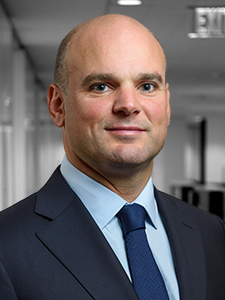General partners adapt to private equity’s ‘mid-life crisis’
The next iteration for the private equity sector, long-time best performer among alternatives, is for general partners to combine the operations of their portfolio companies to boost flagging returns.
Karim Khairallah, a senior managing director and co-portfolio manager at Oaktree Capital in London, and François Mann Quirici, a founding partner at Nexus Associates, also in London, have written a paper published this month (June 9) for the ‘Harvard Business Review’, titled ‘Private Equity’s Mid-Life Crisis’.
They say that the sector, now 50 years old, has matured but investment returns are falling and traditional tools, such as financial engineering, are outdated.

“The next frontier of value creation is to design and manage PE portfolios as a business ecosystem. With portfolio companies linked together, synergies can be realized. Value is primarily created through revenue enhancements, procurement advantages, other cost efficiencies, higher valuation ratings, and some downside protection,” the paper says.
“What’s more, value-creating relationships that cut across the portfolio can often be maintained after portfolio businesses have been sold, so they can increase the sale price.
“To take advantage of an ecosystem approach private equity firms will need to embrace new organisational structures, a harmonisation of systems, new skills, changes to remuneration arrangements, and a culture of cross-business coordination.”
Oaktree Capital is one of the world’s best-known PE managers – or general partners – with about US$153 billion in assets under management as of March 31, 2021. Nexus Associates is a consulting firm which looks to develop innovative strategies in private equity. Mann Quirici has previously worked in private equity and M&A at Lazard investment bank.

The paper argues that not only has financial engineering, such as leverage and price arbitrage, become less effective, which is a natural evolution for the industry, but also operational tools, such as lifting margins and promoting growth, have become more difficult to capitalise on.
The paper says: “Global competition and commoditisation make it harder for products to command a premium price, which squeezes margins. Often a business’s easy-to-accomplish cost savings have already been collected by previous owners.
“A classic PE strategy – integrating small acquisitions into an existing business – still offers revenue growth and other benefits, but its popularity raises the prices of these acquisitions, so returns naturally fall.”
Many managers have sought to counteract the increased competition by creating new forms of “engineering”. They have introduced debt at the portfolio company level as well as the fund and manager levels, but such incremental moves are insufficient to halt the structural erosion of returns, the authors argue.
Managers have to stop treating portfolio companies as a group of isolated individual investments, they say. As a few are now doing, they all need to orchestrate a network of relationships between their portfolio companies. They need to link previously unrelated goods and services across industries, and help the companies unlock new value in each other.
Using combined procurement opportunities as an example, portfolio companies can reduce costs. Revenue relationships can also be developed between interacting businesses.
“The proposed value creation system is specifically adapted to PE’s unique buy-to-sell strategy – the firms’ practice of buying businesses and then, after driving meaningful operational and other improvements over a certain number of years, selling them,” the paper says.
“That means that while some portfolio businesses will form collaborative relationships with each other, they must remain operationally autonomous. This is to diversify portfolio risk and give PE owners the flexibility to sell them at any time.
“So, building such business ecosystems is a balancing act between value on one side, and risk and flexibility on the other.”











